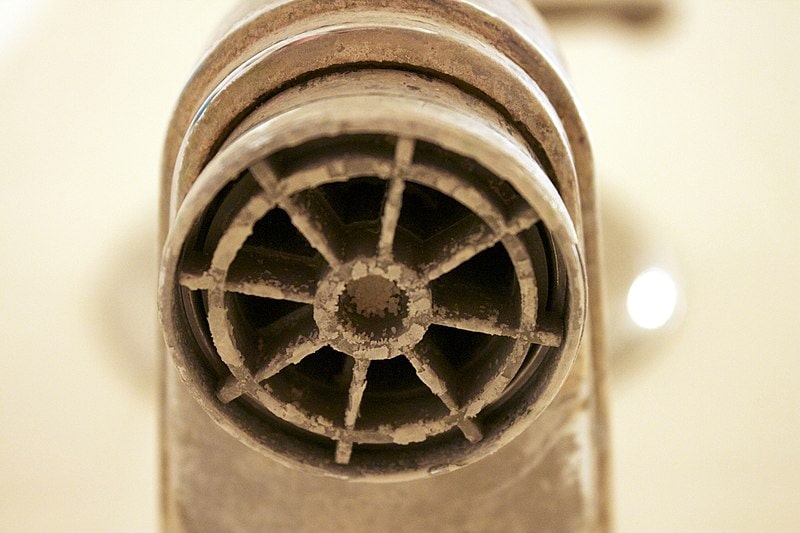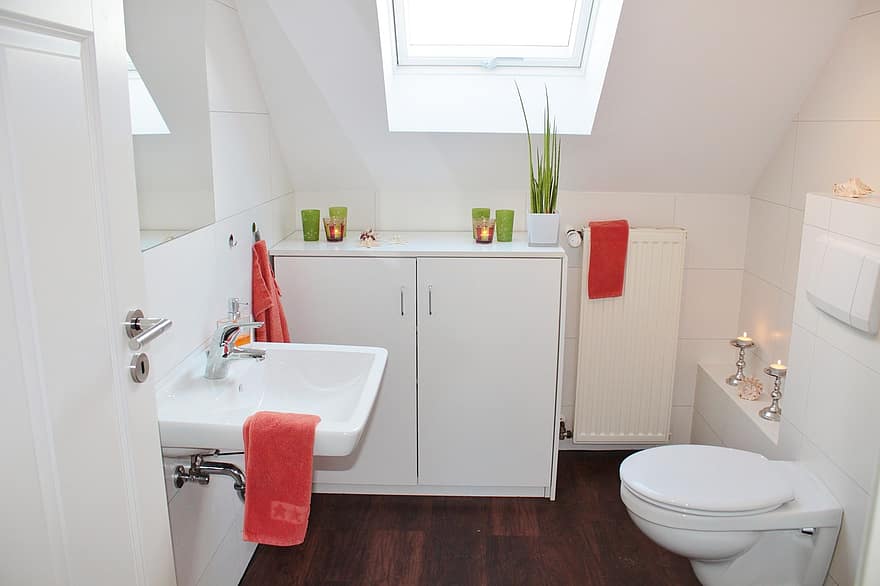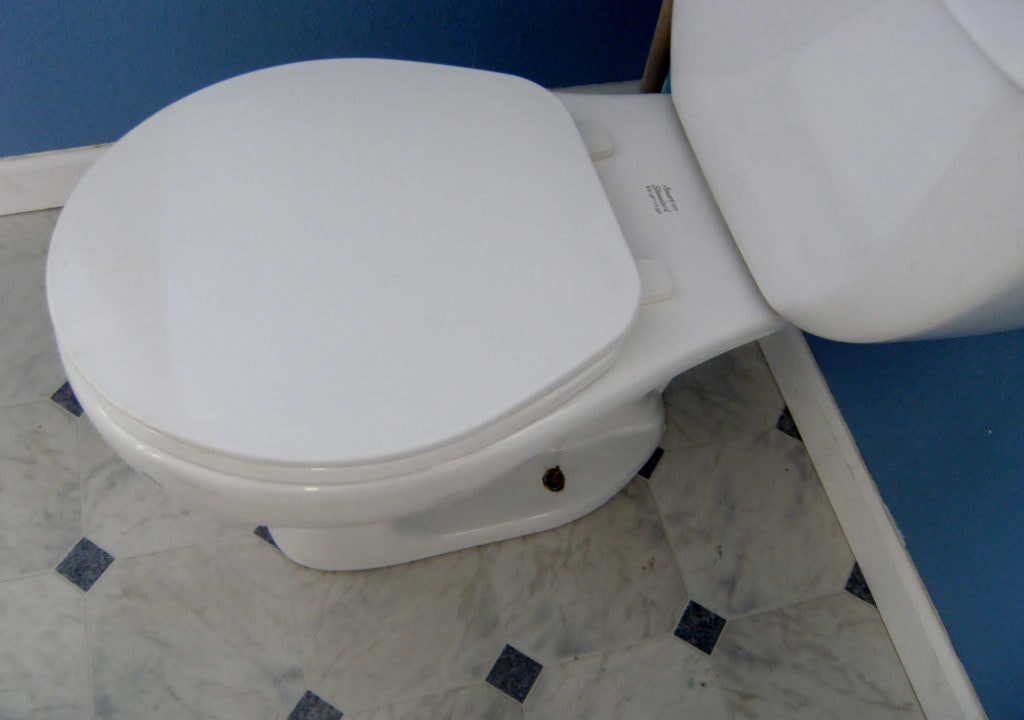Are you thinking about swapping out your toilet with a new one? Before you do, you have to ask yourself if it’s even necessary!
The modern toilet we know today has not changed much since the early 20th century. Sure, new toilet tech has emerged in recent years. But the core design is the same.
So, that begs the question: how long does a toilet last?
To provide an answer, we’re going to look at what wears a toilet down and how to identify signs that your commode is on its last leg.
In This Article We'll Discuss
Average Lifespan of a Toilet
You’re going to hear a lot of different answers to this question depending on who you ask! Some will say that your porcelain throne needs a full replacement every 15 years like other fixtures.
Other people will say that your commode can last well over 100 years! So which is it?
The truth is that toilets are capable of lasting for several decades with proper care. But, some toilets will need replacing much sooner than others.
That’s because many factors affect a toilet’s performance, efficiency, and overall condition. Everyone uses and maintains their toilet differently.
At its core, a toilet is a simple fixture. Standard flushing toilets still rely on gravity to flush. There are no electric components or even complex mechanics to worry about.
The technology in a brand-new toilet is largely the same as a unit from 40 years ago! This simplicity is what makes toilets so long-lasting.
It’s important to remember that even a decades-old toilet will need periodic repairs. The toilet itself can last. But, the inner workings of the fixture can degrade at a faster rate.
Factors That Will Affect a Toilet’s Longevity
All that said, toilets don’t last forever. The fixtures go through the wringer on a daily basis. Not only that, but they have constant exposure to water and waste.
Here are some issues that could wear your toilet down fast.
Poor Maintenance
It’s no surprise that a lack of proper maintenance will have an effect on the toilet. Most recommend that homeowners clean their toilets at least once a week.
This helps to keep bacteria at bay, which maintains the finish and reduces grime. One of the biggest issues you’ll face is the effects of human waste on your commode.
Toilets have a vitreous china coating. Pair that with porcelain’s non-porous nature and you have a resilient commode. But, that doesn’t mean that waste won’t damage the smooth finish over time.
Urine is notorious for causing permanent stains that won’t go away with heavy scrubbing. Eventually, those stains will damage the porcelain, forcing you to replace your toilet!
Learn how to clean your toilet efficiently. Also, use sanitizing cleaners to get rid of bacteria that could harm the finish of the toilet.
Hard Water

Hard water can do a number on your toilet.Dissolved minerals on your water supply eventually harden.
In the toilet, the minerals tend to build up around the jets on the rim. Limescale can accumulate on the flushing components inside the tank, too.
Dealing with limescale is not difficult if you have the right cleaning product. CLR, for example, works wonders. But even if you get rid of calcium buildup, your toilet is going to suffer in the long run.
Pumping hard water through your commode could shorten its lifespan significantly. While you could invest in a water softener, sometimes replacing the toilet is the more economical option.
Damaged Finish
If you already have a ton of scratches on your toilet, it’s only a matter of time before you’ll need a replacement. As we mentioned earlier, toilets have a glossy finish.
If scratches compromise the finish, your toilet becomes a haven for grime. The scratches will trap bacteria and limescale. Plus, it’ll allow those messes to penetrate into the porcelain below.
Over time, those scratches will become bigger and bigger. This can weaken the structural integrity of the toilet. As a result, you may have to deal with bigger cracks and leaks.
Who thought so much was at risk with a simple scratch?
When You Should Get a Need a New Toilet
Just because a toilet is capable of lasting for decades doesn’t mean that you should forgo replacements.
Here are some common reasons why you might want to invest in a new toilet.
Water Efficiency

In 1994, the Energy Policy Act of 1992 became law! With this law came some major shakeups to the toilet industry.
Before 1994, many toilets used far more water than they needed to. Some could waste up to 8 gallons a flush! This put a lot of strain on local water systems.
The Energy Policy Act put some federal regulations into how much water toilets could use. Since 1994, all new toilets have to use no more than 1.6 gallons of water.
Many models are even more efficient! Commodes with the WaterSense label can use 1.28 gallons of water or less! Check out this model from American Standard.
If you live in an older home and have a water hog toilet, it’s worth the upgrade! You can experience a lot of savings on your monthly water costs.
Frequent Clogging
Is the toilet plunger a regular in your bathroom? If so, it may be time for a new toilet.
Older toilets are more prone to clogging than new ones. This is especially true with early low-flow commodes.
There’s no way to repair bad design. Swapping your toilet out with a new one could provide the efficient performance you’re after.
Too Many Repairs

The national average for home toilet repair is about $250.
You can get a brand-new high-efficiency toilet for that price! At some point, it just becomes a money-waster to keep doing repairs.
If you’re constantly calling the plumber, cut your losses and upgrade instead.
Cracks and Leaks
Leaks are something you need to take seriously. Even small leaks can cause structural damage to your home.
Not all leaks will require immediate replacement. Many of them are easy to fix on your own. The trick is finding the source of the leak and addressing the problem directly.
That said, some leaks are more difficult to fix. For example, leaks in the toilet trap or on the bottom of the bowl require a lot of work to repair. In those cases, a complete replacement may be easier.
Ugly Finish
That smooth glossy finish of your toilet can degrade over time. Rust stains, limescale, and deep scratches can take hold if you’re not careful.
Once the finish goes, there’s no easy way to turn back. Cleaning may help to minimize the appearance of stains. But, they’ll usually come back with time.
A brand-new toilet has a pristine finish that’s resistant to staining. Take some extra care to avoid damage and your new commode will have a beautiful finish for years to come.
High-Tech Upgrades
Finally, you could replace your toilet because you want to upgrade to something more advanced. Toilets are continuing to evolve.
These days, dual-flush units are becoming increasingly popular. They save water and have great performance.
Smart toilets and bidet combos are getting more widespread, too. These fixtures offer a lot more flexibility. They can do a lot compared to your old toilet, so an upgrade is well worth the investment.
Conclusion
There’s no hard and fast rule about when you should replace your toilet. Everything from poor maintenance to hard water could shorten its lifespan!
If you’re thinking about getting a new commode, check out this fixture from American Standard. To keep your new toilet in good shape for as long as possible, maintain it with a sanitizing cleaner and some CLR!
Do you still have questions? Leave them in the comments below!
Modern toilets can last for decades with good care. But if you’re constantly dealing with performance problems, why not get an upgrade?

